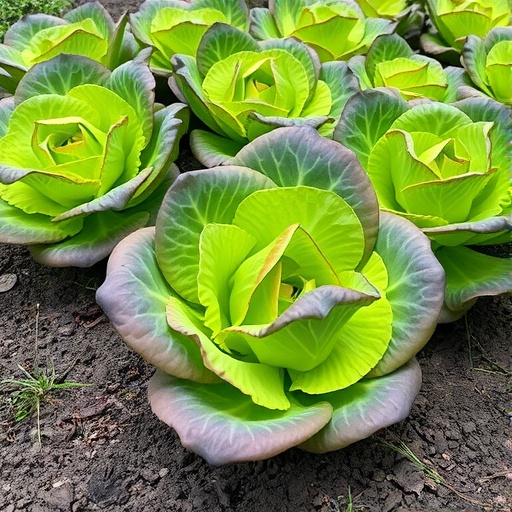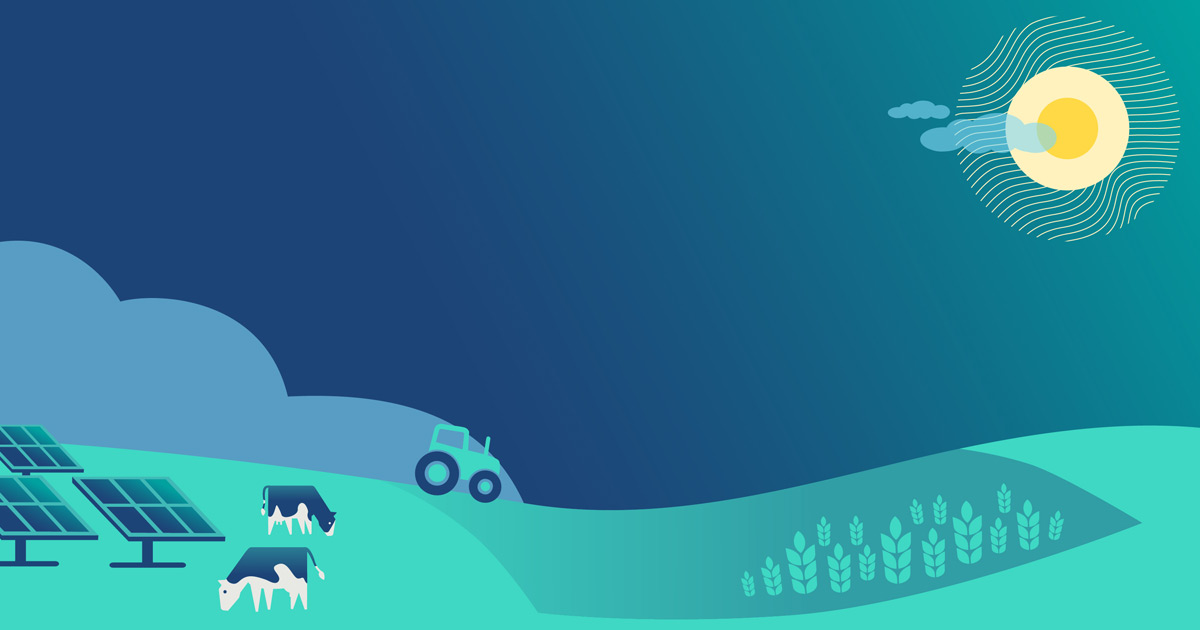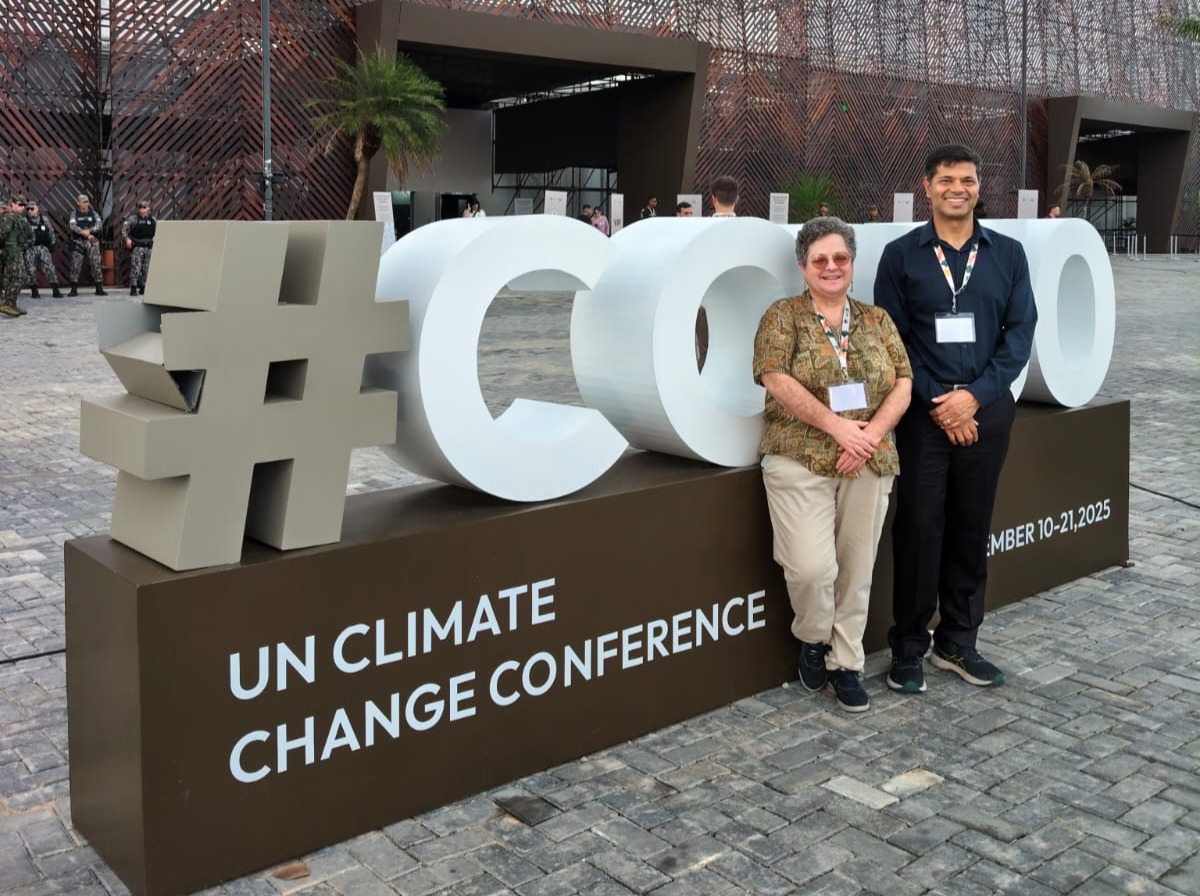Boosting Lettuce Yields with Steel Slag Compost Teas – BIOENGINEER.ORG

Report on an Innovative Strategy for Sustainable Agriculture and Drought Resilience
Executive Summary
A recent study by Abdelhamid, A., Nizar, E.M., and Farid, E. presents an innovative agricultural strategy utilizing steel slag-based compost teas to enhance the yield and stress resilience of lettuce crops under drought conditions. This research provides a practical solution that aligns with multiple United Nations Sustainable Development Goals (SDGs), particularly those concerning food security, sustainable production, climate action, and responsible resource management. By converting an industrial byproduct into a valuable agricultural input, this method promotes a circular economy, improves soil health, and strengthens the resilience of food systems against climate-related stressors.
Addressing Global Challenges Through Agricultural Innovation
In the face of increasing climate variability and its detrimental effects on global food production, innovative and sustainable agricultural practices are paramount. This report examines a novel approach that addresses the critical challenge of drought, a primary barrier to crop productivity. The research demonstrates how steel slag-based compost teas can significantly improve the performance of lettuce, offering a scalable solution with far-reaching implications for sustainable agriculture and global food security.
Alignment with Sustainable Development Goals (SDGs)
This research directly contributes to the advancement of several key SDGs:
- SDG 2 (Zero Hunger): By increasing crop yields and resilience to drought, this innovation directly supports targets for ending hunger, achieving food security, and promoting sustainable agriculture.
- SDG 12 (Responsible Consumption and Production): The practice exemplifies circular economy principles by valorizing steel slag, an industrial waste product, thereby ensuring sustainable production patterns.
- SDG 13 (Climate Action): The strategy provides a tangible method for agricultural adaptation to climate change, enhancing the resilience of farming systems to drought.
- SDG 15 (Life on Land): By improving soil structure, nutrient retention, and biological activity, the application of this compost tea helps combat land degradation and supports terrestrial ecosystems.
Research Methodology and Key Findings
The study investigated the effects of applying compost tea, created by steeping steel slag in water, to lettuce crops subjected to simulated drought conditions. The results indicate significant improvements across biochemical, physiological, and yield metrics.
Performance Enhancements in Lettuce Crops
The application of steel slag-based compost tea resulted in notable enhancements critical for plant survival and productivity under water-scarce conditions:
- Increased Yield and Biomass: Treated lettuce plants demonstrated substantially higher biomass and overall development compared to the control group, directly translating to increased agricultural output.
- Improved Physiological Performance: Key physiological indicators showed marked improvement. This includes enhanced photosynthetic efficiency and better stomatal conductance, which are vital for plant health and growth under stress.
- Enhanced Water Use Efficiency: The treatment stimulated plant metabolism in a way that improved the crop’s ability to utilize limited water resources, a critical factor for drought resilience.
Broader Implications for Sustainable Agriculture and the SDGs
The implications of this research extend beyond a single crop, offering a foundational strategy for a more resilient and sustainable agricultural sector.
Contribution to Circular Economy and Waste Valorization (SDG 12)
The transformation of steel slag from an industrial byproduct into a resource for agriculture is a prime example of waste valorization. This approach aligns perfectly with SDG 12 by minimizing waste and promoting resource recovery, thereby reducing the environmental footprint of both the steel and agricultural industries. It also lessens the reliance on synthetic fertilizers, furthering sustainable production.
Enhancing Soil Health and Land Management (SDG 15)
Soil degradation is a critical global issue that undermines agricultural productivity. This study highlights a method to actively improve soil health. The incorporation of steel slag-derived nutrients and microbes enhances soil structure and boosts its biological activity, creating a positive feedback loop that supports long-term land productivity and contributes to the goals of SDG 15.
Building Climate Resilience in Food Systems (SDG 2 & SDG 13)
As climate change intensifies, adaptation strategies are essential for maintaining global food security. This research provides a practical tool for farmers to build resilience against drought. By ensuring more stable yields despite erratic rainfall, this innovation helps secure food supplies and supports the climate action objectives outlined in SDG 13 and the food security targets of SDG 2.
Conclusion and Future Outlook
The research conducted by Abdelhamid and colleagues presents a transformative and sustainable strategy for modern agriculture. The use of steel slag-based compost teas offers a multi-faceted solution that enhances crop performance, promotes a circular economy, and builds resilience to climate change.
A Path Forward for Sustainable Farming
This innovative approach represents a significant step towards a more sustainable and secure agricultural future. Further research into its application for other crops and in different environmental conditions could accelerate the transition to farming practices that are both productive and ecologically sound. By integrating such waste-to-resource solutions, the global community can make significant progress towards achieving the Sustainable Development Goals and building a resilient agricultural landscape for future generations.
Analysis of Sustainable Development Goals in the Article
1. Which SDGs are addressed or connected to the issues highlighted in the article?
-
SDG 2: Zero Hunger
The article directly addresses food security and sustainable agriculture. It focuses on innovative methods to “bolster crop resilience” and “augment the yield” of lettuce, a food crop. The research aims to combat threats to crop productivity like drought, which the article states “threatens food security.” The overall theme is enhancing food production through sustainable means.
-
SDG 12: Responsible Consumption and Production
This goal is central to the article’s proposed solution. The research promotes using “steel slag, a byproduct of steel manufacturing,” effectively turning an industrial waste product into a valuable resource. This aligns with the principles of a circular economy, as the article notes it “transforms waste into a resource, promoting circular economy principles in agriculture.” This approach supports sustainable management of resources and waste reduction.
-
SDG 13: Climate Action
The context for the research is explicitly linked to climate change. The article opens by mentioning an “era increasingly marked by climate variability” and the need to address “escalating environmental stressors, particularly drought.” The entire study is presented as a strategy to help agriculture adapt to the impacts of climate change, such as “erratic rainfall patterns,” by enhancing crop resilience.
-
SDG 15: Life on Land
The article highlights the positive impact of the proposed method on soil health, which is a key component of terrestrial ecosystems. It states that “Soil degradation is a pressing issue” and that the use of steel slag compost teas can “improve soil structure, enhance nutrient retention, and boost biological activity within the soil,” thereby contributing to the restoration and health of agricultural land.
2. What specific targets under those SDGs can be identified based on the article’s content?
-
SDG 2: Zero Hunger
- Target 2.3: By 2030, double the agricultural productivity and incomes of small-scale food producers. The article’s focus on strategies to “significantly augment the yield” and achieve “higher biomass” in lettuce crops directly contributes to increasing agricultural productivity.
- Target 2.4: By 2030, ensure sustainable food production systems and implement resilient agricultural practices that increase productivity and production, that help maintain ecosystems, that strengthen capacity for adaptation to climate change, extreme weather, drought, flooding and other disasters and that progressively improve land and soil quality. The article is a case study for this target, describing an innovative method as a “long-term strategy for sustainability” that enhances “resilience to water scarcity” and improves “soil health.”
-
SDG 12: Responsible Consumption and Production
- Target 12.2: By 2030, achieve the sustainable management and efficient use of natural resources. The method described involves “reducing reliance on synthetic fertilizers” and using an industrial byproduct, which represents a more efficient use of resources.
- Target 12.5: By 2030, substantially reduce waste generation through prevention, reduction, recycling and reuse. The core innovation of the article is the reuse of steel slag. The text emphasizes that this approach aligns with “the principles of waste minimization and resource recovery in agriculture.”
-
SDG 13: Climate Action
- Target 13.1: Strengthen resilience and adaptive capacity to climate-related hazards and natural disasters in all countries. The research is explicitly designed to “bolster crop resilience in the face of escalating environmental stressors, particularly drought,” which is a direct effort to strengthen the adaptive capacity of agricultural systems to climate-related hazards.
-
SDG 15: Life on Land
- Target 15.3: By 2030, combat desertification, restore degraded land and soil, including land affected by desertification, drought and floods, and strive to achieve a land degradation-neutral world. The article addresses the problem of “soil degradation” and proposes a solution that can “improve soil structure, enhance nutrient retention, and boost biological activity,” which are all actions aimed at restoring degraded agricultural soil.
3. Are there any indicators mentioned or implied in the article that can be used to measure progress towards the identified targets?
Yes, the article mentions or implies several specific indicators that can be used to measure progress:
- For Target 2.3 (Agricultural Productivity), the article provides direct indicators:
- Crop Yield: Measured by “higher biomass and better overall development” of the lettuce plants.
- Production Efficiency: Implied through “enhanced efficiency” for farmers.
- For Target 2.4 (Resilient Practices), the article identifies key physiological indicators:
- Water Use Efficiency: The article states the tea helps “improve water use efficiency.”
- Photosynthetic Efficiency and Stomatal Conductance: These are mentioned as “various physiological parameters” that were measured to assess the plant’s ability to cope with drought.
- For Target 12.5 (Waste Reduction), the indicator is the practice itself:
- Recycling/Reuse Rate: The use of “steel slag, a byproduct of steel manufacturing” in agriculture is a direct measure of reusing industrial waste, thus preventing it from being discarded.
- For Target 15.3 (Land Restoration), the article suggests indicators for soil health:
- Improved Soil Structure: A direct measure of soil quality.
- Enhanced Nutrient Retention: A measurable chemical property of the soil.
- Increased Biological Activity within the soil: Can be measured by microbial counts or other biological indicators.
4. Table of SDGs, Targets, and Indicators
| SDGs | Targets | Indicators |
|---|---|---|
| SDG 2: Zero Hunger |
2.3: Double agricultural productivity.
2.4: Ensure sustainable and resilient food production systems. |
|
| SDG 12: Responsible Consumption and Production |
12.2: Sustainable management and efficient use of natural resources.
12.5: Substantially reduce waste generation through reuse. |
|
| SDG 13: Climate Action | 13.1: Strengthen resilience and adaptive capacity to climate-related hazards. |
|
| SDG 15: Life on Land | 15.3: Combat desertification and restore degraded land and soil. |
|
Source: bioengineer.org
What is Your Reaction?
 Like
0
Like
0
 Dislike
0
Dislike
0
 Love
0
Love
0
 Funny
0
Funny
0
 Angry
0
Angry
0
 Sad
0
Sad
0
 Wow
0
Wow
0




















































.jpg.webp?itok=0ZsAnae9#)



























